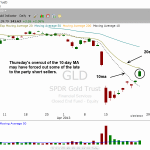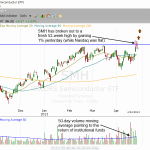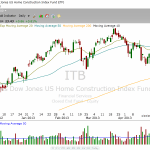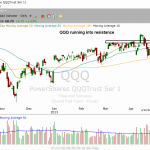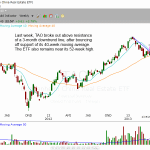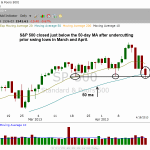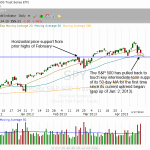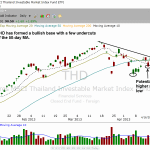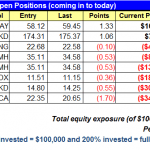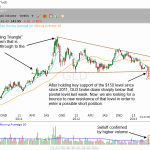After an ugly, two day meltdown in the SPDR Gold Trust ETF ($GLD), the price action has bounced higher the past two weeks and over-cut the 10-day moving average. Thursday’s candle may have wiped out some of the “late to the party” short sellers, who attempted to go short beneath the low of 4/22 on 4/23. Thursday’s gap up may have forced anyone who was on the fence about covering to throw in the towel by the close.
